- No products in the cart.
Glidiab mV Table with modif.vysv. 30mg 60 pc
$3.06
Glidiab mV Table with modif.vysv. 30mg 60 pc
Description
Composition
Active substance:
1 tablet contains: gliclazide in terms of 100% substance – 30 mg ;.
Excipients:
Hypromellose – 0.044 g; 0.123 g of microcrystalline cellulose; colloidal silicon dioxide 0.001 g; magnesium stearate – 0.002 g
Description:
Tablets white or white with kremovatam color, Valium, with a facet.
Presence of “marbling”.
Product form:
The modified-release tablets 30 mg.
10 tablets in blisters of PVC film and aluminum foil. 3 or 6, the contour of cellular packaging together with instructions for use placed in a pile of cardboard.
Contraindications
Hypersensitivity to gliclazide or any of the excipients of the drug, other derivatives of sulfonylureas, sulfonamides; type 1 diabetes; diabetic ketoacidosis, diabetic precoma, diabetic coma; severe renal or hepatic impairment; receiving miconazole; pregnancy and lactation; age 18 years.
It is not recommended to use simultaneously a drug in combination with phenylbutazone or danazol.
CAREFULLY
Advanced age, irregular and / or unbalanced diet, severe diseases of the cardiovascular system (including ischemic heart disease, atherosclerosis), hypothyroidism, adrenal or pituitary insufficiency, hypopituitarism, kidney and / or liver failure, prolonged therapy with glucocorticosteroids (GCS) alcoholism, lack of glucose-6-phosphate dehydrogenase.
Dosage
30 mg
Indications
Type 2 diabetes is the lack of effectiveness of diet therapy, exercise and weight loss.
Prevention of complications of diabetes: reduced risk of microvascular (nephropathy, retinopathy) and macrovascular disease (myocardial infarction, stroke) in patients with type 2 diabetes by intensive glycemic control.
Interaction with other drugs
1) adjuvants gliclazide (increased risk of hypoglycaemia)
contraindicated combinations
Miconazole (systemic administration or application of the gel to the oral mucosa) enhances hypoglycemic effect gliclazide (possibly hypoglycaemia until coma state).
Not recommended combinations
Phenylbutazone (systemic administration) enhances the effect of hypoglycemic sulfonylureas (displaces them from binding with plasma proteins and / or slows their excretion from the body). It is preferable to apply a different anti-inflammatory drug. If the reception phenylbutazone is required, the patient must be warned about the need to monitor blood glucose. If necessary, gliclazide dose should be adjusted during reception and phenylbutazone after its closure.
Ethanol: enhances hypoglycemia by inhibiting compensatory reactions may contribute to the development of hypoglycemic coma. It is necessary to abandon the medication, which include ethanol and alcohol.
Combinations requiring precautions
Receiving gliclazide in combination with certain drugs, e.g., other hypoglycemic drugs (insulin, alpha-glucosidase inhibitors, metformin tiazolidinidionami, dipeptidyl peptidase-4 inhibitors, agonists of glucagon-like peptide-1); beta-blockers, fluconazole; inhibitors of angiotensin converting enzyme – captopril, enalapril; histamine H2 receptor blockers; monoamine oxidase inhibitors; sulfonamides, clarithromycin and nonsteroidal anti-inflammatory drugs is accompanied by increased hypoglycemic effect and the risk of hypoglycemia. 2) Formulations that promote an increase in blood glucose (attenuating action gliclazide)
Not recommended combinations
Danazol: it has a diabetogenic effect. If taking the drug is required, the patient is recommended to control the level of blood glucose. If necessary, co-administration of drugs, dose selection recommended gliclazide both during receiving danazol and after its cancellation.
Combinations requiring precautions
Chlorpromazine: in high doses (100 mg daily) increases the concentration of glucose in the blood, reducing insulin secretion. It is recommended to control the level of blood glucose.
If necessary, co-administration of drugs, dose selection recommended gliclazide like during reception of chlorpromazine and after its cancellation.
Corticosteroids (topical and systemic application: intraarticular, external, and rectal administration) and tetrakozaktid: increase the concentration of glucose in blood with possible development of ketoacidosis (reduced tolerance to carbohydrates). It is recommended to control the level of blood glucose, especially at the beginning of treatment. If necessary, co-administration of drugs, dose adjustment may require hypoglycemic agent both during reception or GCS tetrakozaktidom and after their withdrawal.
Ritodrine, salbutamol, terbutaline (intravenous): beta2-agonists contribute to the concentration of blood glucose.
It is necessary to pay special attention to the importance of self-monitoring blood glucose concentrations. If necessary, it is recommended to transfer the patient to insulin.
Combinations to be taken into account
Anticoagulants (e.g., warfarin) sulfonylurea derivatives can enhance the effect of anticoagulants during coadministration. You may need a dosage adjustment of the anticoagulant.
Overdose
Symptoms: hypoglycemia, up to the development of hypoglycemic coma.
Treatment: Moderate symptoms of hypoglycaemia, without impairment of consciousness or neurological symptoms correct reception of carbohydrates, the selection of dose and / or change of diet. Careful monitoring of the patient should continue as long as there is no certainty that the patient’s health is not in danger.
The possibility of severe hypoglycemic states, accompanied by coma, convulsions or other neurological disorders. When you see these symptoms is necessary to provide emergency medical assistance and immediate hospitalization.
When the diagnosis is suspected or hypoglycemic coma patient intravenously administered 50 ml of 40% dextrose (glucose). Then intravenous infusion of 5% dextrose solution to maintain the desired blood glucose concentration of about 1 g / l. Careful control of blood glucose levels and patient monitoring should be carried out for at least 48 hours later. In the future, depending on the condition of the patient, should decide on the need to further monitor the patient’s vital functions.
Dialysis is ineffective due to express gliclazide binding to plasma proteins.
pharmachologic effect
Pharmacological group:
Hypoglycemic agent for oral administration group II generation sulfonylureas.
Pharmacodynamics:
Gliclazide is a derivative of sulfonylurea hypoglycemic drug for oral administration which is characterized by the presence of similar medications containing N-heterocyclic rings endocyclic bond.
Gliclazide reduces the concentration of blood glucose by stimulating insulin secretion, beta-blockers, the islets of Langerhans. Increasing concentrations of postprandial insulin and C-peptide is retained after 2 years of therapy.
Besides effects on carbohydrate metabolism has gliclazide hemovascular effects.
Effect on secretion of insulin
In type 2 diabetes gliclazide restores early peak of insulin secretion in response to glucose intake and increases the second phase insulin secretion. A significant increase is observed in insulin secretion in response to stimulation due to ingestion or administration of glucose.
hemovascular effects
Gliclazide reduces the risk of thrombosis small vessels, affecting the mechanisms that may cause complications in diabetes: partial inhibition of platelet aggregation and adhesion and a decrease in the concentration of platelet activating factor (beta-thromboglobulin, thromboxane B2) and for the restoration of fibrinolytic vascular endothelial activity and increase in the activity of tissue plasminogen activator.
Intensive glycemic control is based on the use of gliclazide modified release (target glycosylated hemoglobin (HbAlc)
Pharmacokinetics:
Absorption
After oral gliclazide is completely absorbed from the gastrointestinal tract.
The concentration of the active substance gradually increases in the blood plasma for 6 hours plateau level is maintained from 6 to 12 hours after ingestion. Individual variability is low. Food intake does not affect absorption of gliclazide.
Distribution
Communication with the plasma proteins is approximately 95%. The volume of distribution of approximately 30 liters.
Daily intake of a single dose of the drug maintains an effective concentration of gliclazide in plasma over 24 hours.
Metabolism
Gliclazide is metabolized primarily in the liver. Active metabolites in plasma are absent.
breeding
Gliclazide is derived mainly kidneys. Excretion of metabolites is done in the form of less than 1% is excreted unchanged. The half-life of gliclazide is, on average, from 12 to 20 hours.
Linearity
The relationship between the received dose (120 mg) and area under concentration curve of concentration – time is linear.
special populations
In the elderly clinically significant changes in pharmacokinetic parameters was observed.
Pregnancy and breast-feeding
Pregnancy
Experience in the use of gliclazide during pregnancy is not available.
Data on the use of other sulfonylurea derivatives during pregnancy are limited.
In laboratory animal studies, teratogenic effects of gliclazide were identified.
Oral hypoglycemic drugs during pregnancy does not apply. The drug of choice for treatment of diabetes in pregnancy is insulin. It is recommended to replace the reception of Gliclazide on insulin therapy in the case of a planned pregnancy, and in that case, if the pregnancy while taking the drug.
Breastfeeding
Given the lack of data on the penetration of gliclazide into breast milk and the risk of neonatal hypoglycemia, during drug therapy, breast-feeding is contraindicated.
Conditions of supply of pharmacies
On prescription.
side effects
Given the experience with gliclazide, to be aware of the possibility of the following side effects.
hypoglycemia
Like other sulfonylureas preparations Glidiab® CF drug may cause hypoglycemia in the case of the irregular food intake and especially if the meal is omitted.
Possible symptoms of hypoglycemia include headache, severe hunger, nausea, vomiting, fatigue, sleep disturbance, irritability, agitation, decreased concentration, slowed reactions, depression, confusion, impaired vision and speech, aphasia, tremor, paresis, impaired perception , dizziness, weakness, convulsions, bradycardia, delirium, impaired breathing, drowsiness, loss of consciousness with the possible development of coma, or death. Also, the reaction may occur andrenergic: sweating, “sticky” skin, anxiety, tachycardia, increased blood pressure, palpitations, angina and arrhythmia.
On the part of the gastrointestinal tract: nausea, vomiting, abdominal pain, diarrhea, constipation. Taking the drug during lunch to avoid these symptoms or to minimize them.
Skin and subcutaneous tissue disorders: rash, pruritus, urticaria, erythema, rash makulopapulleznaya, bullous reactions (such as Stevens-Johnson syndrome and toxic epidermal necrolysis).
From the blood and lymphatic system: anemia, thrombocytopenia, leukopenia, granulocytopenia.
As a rule, these effects are reversible when discontinuing therapy.
From a sight organ: there may be transient visual disturbances caused by changes in blood glucose concentration, especially at the beginning of therapy.
Adverse effects inherent sulfonylurea derivative. As in patients receiving other sulfonylureas observed following side effects: erythropenia, agranulocytosis, hemolytic anemia, pancytopenia, allergic vasculitis, hyponatremia.
Observed increased activity “liver” enzymes, abnormal liver function (e.g., with the development of jaundice and cholestasis) and hepatitis. These manifestations decreased with time after the abolition of sulfonylureas, but in some cases lead to life-threatening liver failure. When the cholestatic jaundice need to discontinue therapy.
special instructions
hypoglycemia
When receiving sulphonylureas, including gliclazide, hypoglycaemia may develop, and in some cases – in the form of a severe and prolonged, requiring hospitalization and intravenous administration of dextrose solution in a few days.
Glidiab®MV drug can be assigned only to those patients who have food regularly and includes breakfast. It is important to maintain adequate intake of carbohydrates from food, because increasing the risk of hypoglycemia at irregular or insufficient food, as well as food consumption, low-carbohydrate. Hypoglycemia occurs more frequently with a low calorie diet, following prolonged or vigorous exercise after drinking alcohol or taking several hypoglycemic drugs simultaneously.
Typically, hypoglycemia symptoms disappear after a meal rich in carbohydrates (e.g., sugar). IHST should be aware that the reception of sugar substitutes is not conducive to the elimination of hypoglycemic symptoms. Experience with other sulfonylureas indicates that hypoglycemia can recur despite the initial effective relief of this condition. In the case where hypoglycaemic symptoms have a pronounced character or are prolonged, even in case of temporary improvement after ingestion of food rich in carbohydrates, necessary emergency medical assistance, up to hospitalization.
To avoid hypoglycemia requires careful selection of individual drugs and dosing regimens, as well as giving the patient full information about the proposed treatment.
Increased risk of hypoglycaemia can be observed in the following cases: • the failure or inability of the patient (especially the elderly) to follow the doctor’s appointment and control their condition; • insufficient and irregular meals, skipping meals, fasting, and the change in diet; • an imbalance between exercise and the amount of carbohydrate taken; • renal insufficiency; • severe hepatic insufficiency; • Glidiab®MV overdose of the drug; • certain endocrine disorders (thyroid disease, pituitary and adrenal insufficiency); • concomitant use of certain drugs.
Deficiency of glucose-6-phosphate dehydrogenase
Sulfonylureas can cause hemolytic anemia in patients with deficiency of glucose-6-phosphate dehydrogenase. Because sulfonylurea derivative gliclazide is, care must be taken when it is administered to patients with deficiency of glucose-6- phosphate dehydrogenase. It is necessary to evaluate the possibility of appointing a hypoglycemic drug the other group.
Hepatic / renal failure
Patients with hepatic and / or severe renal insufficiency is possible to change the pharmacokinetic and / or pharmacodynamic properties of gliclazide. Hypoglycemia, which develops in these patients can be quite long, in such cases, immediate appropriate therapy.
Information for Patients
It is necessary to inform the patient and his family about the risk of hypoglycemia, its symptoms and conditions that contribute to its development. The patient should be informed of the potential risks and benefits of the proposed treatment. The patient may need to explain the importance of diet compliance, the need for regular exercise and regular monitoring of blood glucose levels.
Inadequate glycemic control
Glycemic control in patients receiving hypoglycemic agents may be weakened in the following cases: fever, trauma, infectious disease or major surgery. Under these conditions it may be necessary to stop therapy with Glidiab®MV and prescribe insulin.
In many patients, the effectiveness of oral hypoglycemic agents, including gliclazide, it tends to decline after a long period of treatment. This effect may be due to both disease progression and the decrease in therapeutic response to a drug. This phenomenon is known as a secondary drug resistance, which must be distinguished from primary, at which the drug already at the first assignment gives the expected clinical effect. Before diagnosing a patient secondary drug resistance, it is necessary to evaluate the adequacy of the selection of dose and adherence to their prescribed diets.
Monitoring of laboratory parameters
To assess glycemic control recommend regular determination of the concentration of blood glucose and glycosylated hemoglobin, fasting. In addition, it is advisable to conduct regular self-monitoring blood glucose concentrations.
Effect on the ability to drive mechanisms and
In connection with the possible development of hypoglycemia when using the drug Glidiab CF patients should be aware of the symptoms of hypoglycemia and caution while driving a vehicle or perform work requiring high speed psychomotor reactions, especially early in therapy.
Storage conditions
Stored in a dry place protected from light at a temperature not higher than 25 ° C.
Keep out of the reach of children.
Dosing and Administration
The drug is intended for the treatment of adults.
The recommended dose of the drug should be taken orally, 1 time a day, preferably at breakfast time. It is recommended to swallow the tablet whole without chewing or crushing.
When you pass one or more administrations of the drug should not take a higher dose to the next appointment, the missed dose should be taken the next day. As with other hypoglycemic drugs, the drug dose in each case should be selected individually depending on the concentration of blood glucose and glycosylated hemoglobin (HbAlc).
The initial dose
The initial recommended dose for adults (including elderly patients> 65 years old) – 30 mg (1 tablet) per day.
If adequate control of the drug at this dose can be used for maintenance therapy. When inadequate glycemic control daily dose can be sequentially increased to 60 mg, 90 mg or 120 mg. Dose escalation is possible not earlier than 1 month of drug therapy in the previously prescribed dose. Exceptions are patients whose blood glucose concentration is decreased after 2 weeks of therapy. В таких случаях доза препарата может быть увеличена через 2 недели после начала приема.
Поддерживающая терапия
Поддерживающая суточная доза составляет от 30 до 120 мг.
Максимальная рекомендуемая суточная доза препарата составляет 120 мг.
Переход с приема препарата Глидиаб® таблетки 80 мг на препарат Глидиаб®МВ, таблетки с модифицированным высвобождением 30 мг 1 таблетка препарата Глидиаб®, таблетки 80 мг, может быть заменена 1 таблеткой с модифицированным высвобождением 30 мг препарата Глидиаб®МВ. При переводе пациентов с препарата Глидиаб®, таблетки 80 мг, на препарат Глидиаб®МВ рекомендуется тщательный гликемический контроль.
Переход с приема другого гипогликемического лекарственного средства на препарат Глидиаб®
МВ, таблетки с модифицированным высвобождением 30 мг Препарат Глидиаб®МВ, таблетки с модифицированным высвобождением 30 мг, может применяться вместо другого перорального гипогликемического средства. При переводе на препарат Глидиаб® МВ пациентов, получающих другие пероральные гипогликемические препараты, следует учитывать их дозу и период полувыведения. Как правило, переходного периода при этом не требуется. Начальная доза препарата Глидиаб®МВ должна составлять 30 мг и затем должна титроваться в зависимости от концентрации глюкозы крови.
При переводе пациента с терапии гипогликемическими препаратами с длительным периодом полувыведения, может возникнуть необходимость во временном (в течение нескольких дней) прекращении лечения во избежание аддитивного эффекта, повышающего риск развития гипогликемии. Начальная доза препарата Глидиаб®МВ при этом также составляет 30 мг и при необходимости может быть повышена в дальнейшем, как описано выше.
Комбинированный прием с другим гипогликемическим лекарственным средством Глидиаб®МВ может применяться в сочетании с бигуанидинами, ингибиторами альфа- глюкозидазы или инсулином.
При неадекватном гликемическом контроле следует назначить дополнительно инсулинотерапию с проведением тщательного медицинского контроля.
Elderly patients
Recommended for the elderly doses are identical to those for adults up to 65 years.
Почечная недостаточность
Рекомендуемые дозы препарата при почечной недостаточности легкой и средней степени тяжести идентичны таковым для лиц с нормальной функцией почек.
Пациенты с риском развития гипогликемии
У пациентов, относящихся к группе риска развития гипогликемии (недостаточное или несбалансированное питание; тяжелые или плохо компенсированные эндокринные расстройства – гипофизарная и надпочечниковая недостаточность, гипотиреоз; отмена ГКС после их длительного приема и/или приема в высоких дозах; тяжелые заболевания сердечно-сосудистой системы (тяжелая ишемическая болезнь сердца, тяжелый атеросклероз сонных артерий, распространенный атеросклероз) рекомендуется применять минимальную дозу (30 мг) препарата Глидиаб®МВ.
Профилактика осложнений сахарного диабета
Для достижения интенсивного гликемического контроля можно постепенно увеличивать дозу препарата Глидиаб® МВ до 120 мг/сутки в дополнение к диете и физическим упражнениям до достижения целевого значения HbAlc. Следует помнить о риске развития гипогликемии. Кроме того, к терапии можно добавить другие гипогликемические лекарственные средства, например, метформин, ингибитор альфа-глюкозидазы, производное тиазолидиндиона или инсулин.
Information
Appearance may differ from that depicted in the picture. There are contraindications. You need to read the manual or consult with a specialist
Additional information
| Weight | 0.100 kg |
|---|---|
| Manufacturer | QUINACRINE |

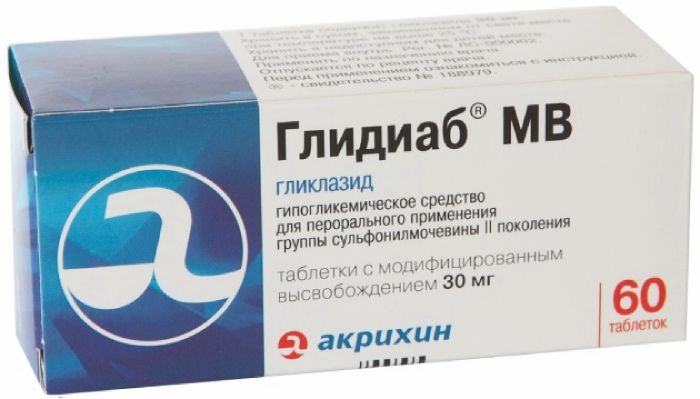
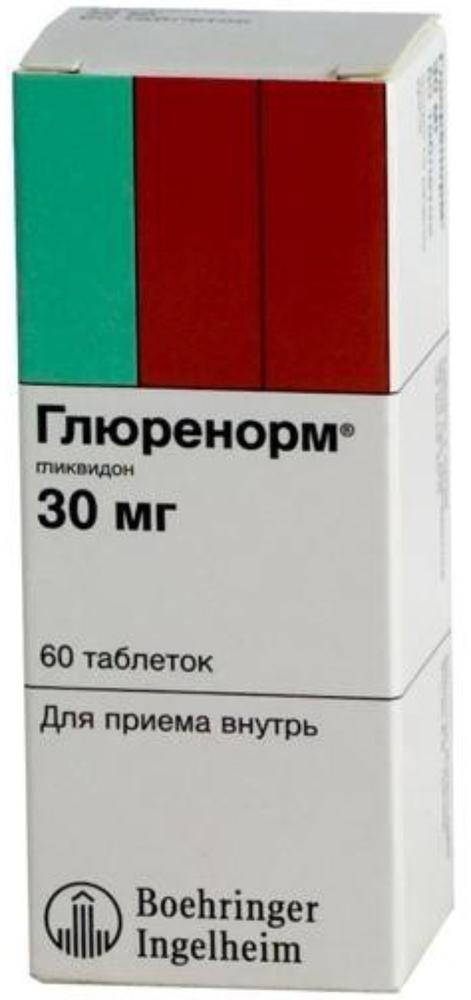

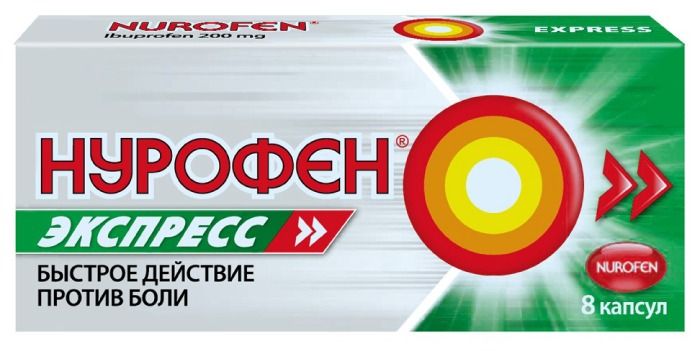
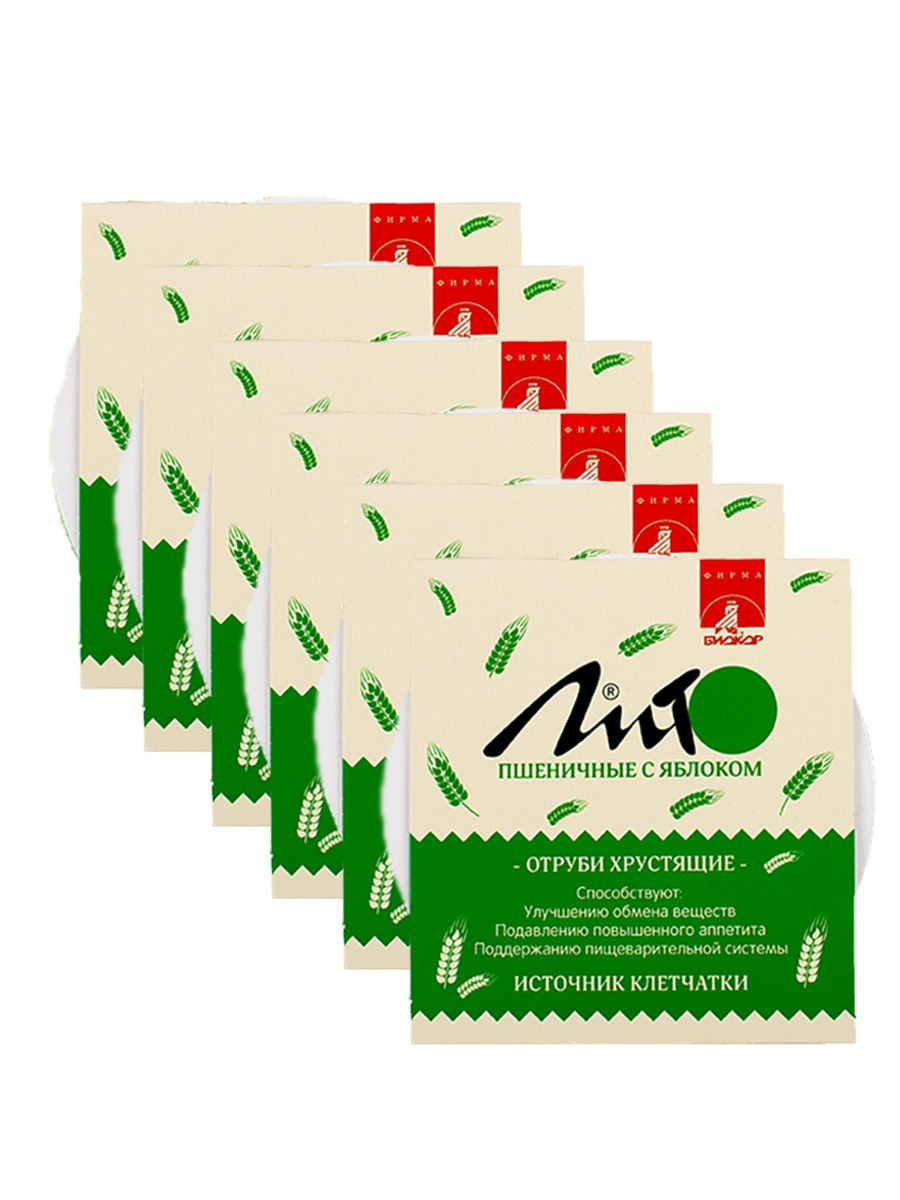

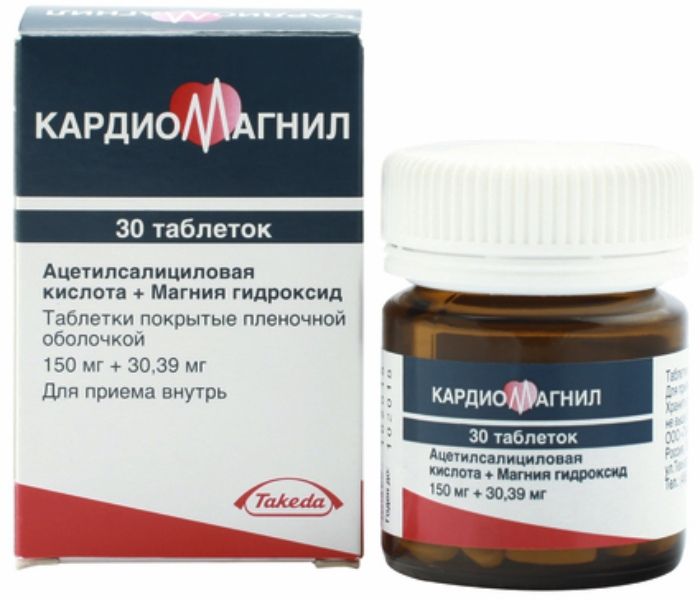




There are no reviews yet.